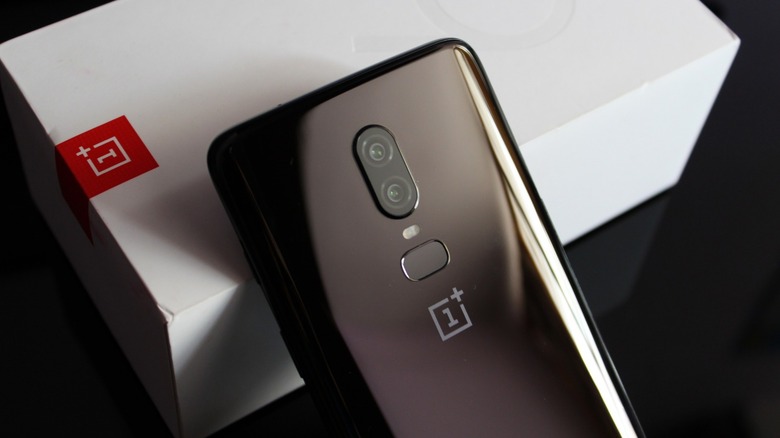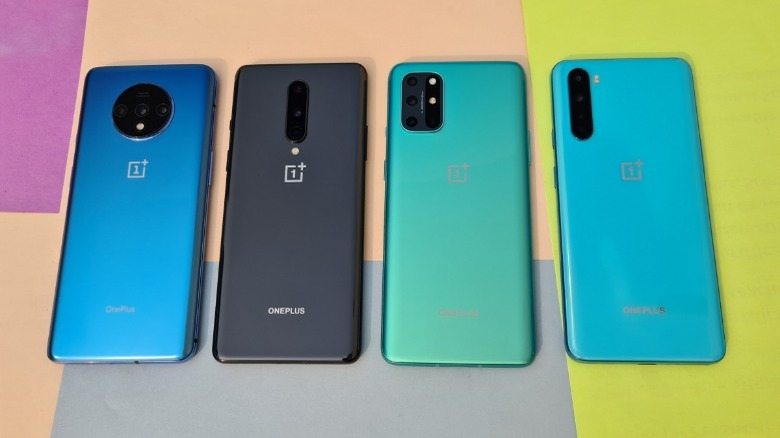This Is Why So Many People Hate OnePlus Phones
As Carl Pei, the founder of OnePlus writes on the OnePlus Community, the smartphone company started in 2013 as an effort to do things better, and with more transparency, than the contemporary manufacturers of the time. The idea was to run a company with a slim marketing budget, that produced excellent hardware that spoke for itself. OnePlus quickly became known for its feisty marketing campaigns that poked fun at the competition, and would go on to release the OnePlus One in June 2014 (via GSM Arena).
From the outset, you could tell that OnePlus was doing things differently, as is shown by GSMArena's review of the OnePlus One. Instead of overloading the device with unnecessary gimmicks and bloated software, the OnePlus one embodied its "Never Settle" motto by including everything necessary for flagship performance and nothing more. On top of its top-tier hardware, one of the biggest selling points for OnePlus was its software. OnePlus used CyanogenMod, a custom, lightweight, open-source Android ROM that was popular in the Android modding community for its customization, stability, and superior performance.
OnePlus had a winning recipe of low prices, excellent software, and great hardware that quickly made its phones a top choice on the hunt for a so-called "flagship killer." This trend continued for a few years, but as time wore on, OnePlus underwent some drastic changes that would lead its loyal fanbase to turn on the company.
An acquisition, software issues, and price creep sour a good reputation
After a few years of releasing a couple of affordable, well-received, flagship killers every year, the price creep meant OnePlus was eventually just releasing flagship devices at flagship prices. Although the CyanogenMod software it had previously used had been switched out for its own custom OxygenOS, the software experience was still mostly praised for being smooth, efficient, and bug-free — at least until OnePlus merged with Oppo on June 16, 2021 (via The OnePlus Community).
After the merger, OnePlus's and Oppo's software teams would reportedly be working together more closely to develop OxygenOS and ColorOS. Despite initial plans to merge OxygenOS with Oppo's ColorOS into one unified operating system being scrapped, Oppo's influence on OxygenOS is clear. What was once a clean, stable operating system free of bloatware, started receiving updates that added unwanted apps and services. To add insult to injury, even brand-new premium devices like the $899 OnePlus 10 Pro were riddled with bugs and issues that marred the user experience.
Users and reviewers express their frustrations online
For a company that proudly brandishes "Never Settle" across just about every surface possible — including the lock screens of its devices — OnePlus seems to have settled when it comes to the software experience if online reviews and complaints from users are to be believed. "The vocal minority," is a phrase that's often thrown around when tech companies and fans of the products defend issues against online criticism. While it's a valid point that users are far more likely to post about a negative experience rather than a positive or satisfactory one, it's impossible to discount reports of poor user experience.
One Reddit user, u/MerpdyDerp, complained about the Android 12 update to their OnePlus 7T breaking simple things like Wi-Fi and mobile connectivity, as well as reducing the customization and generally making the user experience less intuitive. Another user, u/borse2008 brandished many complaints, largely centered around poor performance, intermittent rebooting, and excessive battery drain. In another, rather comedic, example, u/Tktkji somehow ended up with a home-screen widget displaying "Wednesda" after the software apparently failed to appropriately scale the text to the correct size of the widget.
It's not just users reporting issues with newer OnePlus phones, either. Popular tech YouTuber, LinusTechTips, made a rather lengthy video documenting all the issues he and his family had experienced with recent OnePlus devices. It seems as if expanding the OnePlus device roster with mid-range devices, like the Nord, might also have diluted the brand's core identity.


